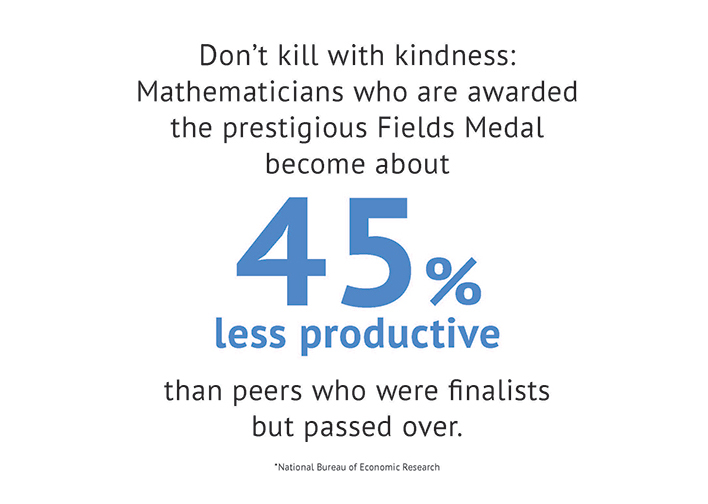Racing Against Cancer
Jockey Victor Espinoza netted about $80,000 when his mount American Pharoah swept the Triple Crown of horseracing this year. But Espinoza gave away every penny. He handed his historic winnings, in their entirety, to City of Hope—a charity that operates pediatric cancer-treatment centers in California.
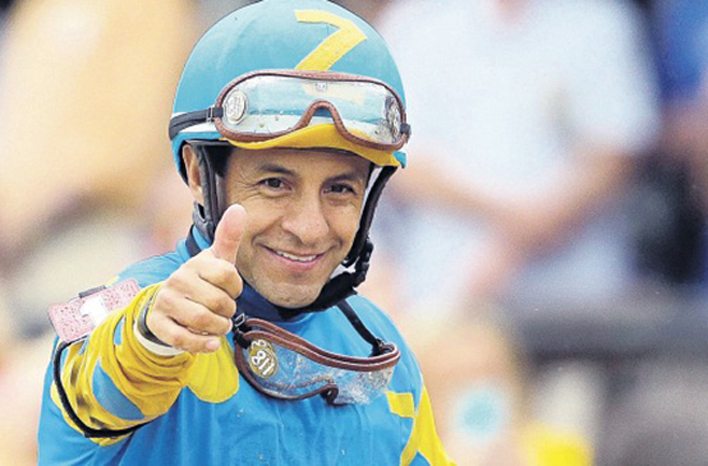
Victor Espinoza shifts from tither to sacrificial giver. (Bob Warren)
Espinoza has for years donated 10 percent of his income to City of Hope. This dates to a visit he made to the facility with a friend. “We walk in and I can’t stay. I see kids with no hair…I went back out to the car and sat.” Overcome by emotion, Espinoza started sending tithes anonymously.
One of 12 children, Espinoza drove a bus in Mexico City before moving to the United States and becoming a jockey. When he won the first Triple Crown in four decades there was nothing he wanted to do more with the money than donate it. “Sometimes I forget to pay my bills,” he told a reporter, “but I never forget City of Hope.
Rolling Charity
Victor Espinoza is not the only athlete creating philanthropic ripples this summer. The 22-year-old Wisconsin graduate Matt Stoltz is biking to every Major League baseball stadium in the United States—a 11,155 mile cross-country ride—in an effort to raise visibility and $100,000 in donations for mentoring organizations like Big Brothers Big Sisters and the Boys and Girls Clubs of America. Stoltz began his journey in Seattle on opening day, then headed down the coast to San Francisco, Oakland, Anaheim, Los Angeles, and San Diego. He expects to spend 180 days on his journey, relying on the good will of baseball fans, travelers, and fellow Americans to turn his exertions into good deeds.
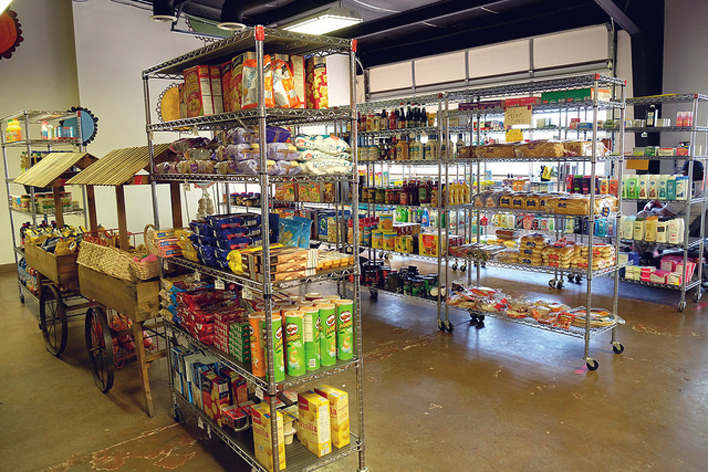
Is it a grocery store? Is it a church? It depends on where you wheel the shelves. (Ashley May)
Seeding Civil Society
Clark Millspaugh had created a successful oil and gas company in Tulsa, Oklahoma. He had completed the New York City and Boston marathons. He had been a solid citizen. But he was searching for life significance as he approached his 50th birthday.
Attending an event led by prominent philanthropist Bob Buford got Millspaugh thinking about the second half of his life, particularly in regards to faith. “He moved from being a Christian who thought about the list of do-nots, to instead focusing on the dos,” summarizes local pastor Daniel May. After a time of praying and dreaming about helping the poor, Millspaugh retired early, sold the controlling share in his company, and started mentoring students.
Then the school principal told him that if he really wanted to help, he should create a local grocery store for families in the area. The Westside neighborhood of Tulsa, where 80 percent of the housing is government-subsidized, was classified as a food desert: no grocery store was within walking distance or reasonable public transportation connections.
Millspaugh raised $625,000 from friendly investors and purchased two metal buildings within walking distance of 3,000 Westside residents. In 2009, the Harvest Market was born: a 1,200-square-foot grocery staffed by job-seekers from the neighborhood. The elementary school next door complemented the effort by running a gardening program for students on the property.
Today, the Harvest Market has expanded to include a free health clinic, GED classes with an 89 percent pass rate, and counseling services. Families can even come to the store for nutrition-focused cooking classes hosted by the Junior League.
Perhaps the most original twist is that a small church now meets inside the market on Sundays. Pastor May agreed to manage the store and all activities on premises in return for use of the space for services. The grocery racks are all on wheels so they can be pushed to the perimeter to clear a central worship space.
The combined operation runs on a total budget of $100,000, using three store employees and three church staffers. The health clinic and counseling services are manned by partner organizations and a healthy corps of volunteers drawn from the church and elsewhere. When May moved his small church to the premises it was attended by 35 primarily white, young married couples. Today the congregation has more than doubled and includes an unusual mix of races and economic classes.
“Clark’s vision was always to get the market up and running and then turn it over to another organization to run,” May says. “Because of his belief that the grocery store was a tool to pull together people in the neighborhood and build relationships and introduce the Gospel message, he wanted that organization to be a church.” Millspaugh said that his main goal for the Harvest Market was for the people it serves “to realize that they’re loved, cared for, sharing God’s unconditional love.”
Now a new Harvest is coming: Tulsa’s George Kaiser Family Foundation has offered to expand the market, buying the lot next door to increase it to 4,800 square feet. That will enable the market to carry more varieties of food and to expand its program offerings. All of this will be privately funded.
Millspaugh passed away in 2012 but his wife, Anne, and their daughter, Julie, serve on the Harvest board, along with three of his dearest friends. “They were all original investors in the property,” says May. So “his vision lives on”—almost as concretely as the cans stocked on the soup shelf.
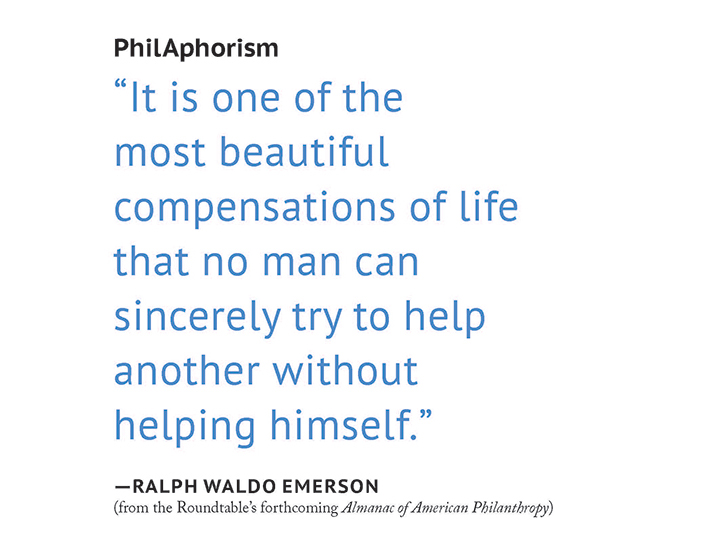
Mapping a Disaster
On April 25, a 7.8 magnitude earthquake hit Nepal, killing more than 7,000 people and injuring many more. In Kathmandu, the country’s capital of 700,000 people, local engineers have said that more than three quarters of the buildings need repairs before they can be considered safe; one fifth are uninhabitable. As if that wasn’t turmoil enough, the surge of planes transporting tents, water, food, and medical aid to Kathmandu destroyed the airport’s main runway. Aid workers and government officials called for helicopters in order to to reach rural villages in Nepal inaccessible by vehicle.
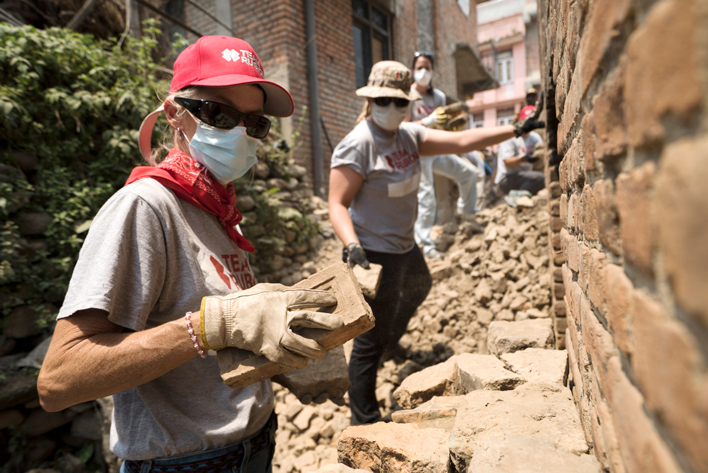
Team Rubicon clears rubble in Nepal. (Team Rubicon)
One of the aid organizations that leapt to respond was Team Rubicon, which provides work groups of ex-military volunteers after disasters of any kind. A TR reconnaisance team landed in Kathmandu the day after the quake and used drones to survey the scene and assess the most crucial physical priorities. Partnering with HaloDrop and Palantir Technologies, the Rubiconers overlaid their aerial shots of the disaster zone on maps that were used to direct their medical team that followed, as well as other aid groups. Team Rubicon sent more than 30 medics, linguists, and other first responders. For more information on how Team Rubicon and other new-wave veterans groups are keeping their members in public service, see page 38.
Donor Intent Rescued in CT
When Shelby Cullom Davis gave $750,000 to Connecticut’s Trinity College in 1976 to endow a chair to teach private enterprise and entrepreneurship, he specified that there would be “no exceptions whatsoever” in the use of the money. A few years later, the college approached Davis about changing allocation of the funds because of evolving views and conditions at the school. Davis repeated that “no other purpose” for the funds would be acceptable to him.
Fast forward to 2008, when the occupant of the Davis Chair, professor Gerald Gunderson, caught wind that the college was diverting some of the funds. Despite his repeated attempts to build an entrepreneurship program in line with the stated wishes of the donor and documented student interest, the college had instead steered much of the money into other projects. Gunderson, who knew Davis while he was alive, reported a violation of donor intent to the Connecticut attorney general. Then-attorney general and now-Senator Richard Blumenthal was sympathetic to Gunderson’s concerns.
Gunderson’s administration was not. “Trinity’s president summoned him to the school’s cavernous Gothic conference room, where he called the professor a ‘scoundrel’ and threatened not to reappoint him,” the Wall Street Journal reported. The American Council of Trustees and Alumni got involved, petitioning the board of the college to honor Davis’s intent, as this was “critical to maintaining the trust of current and future Trinity College donors.”
Subsequent investigations showed that Trinity had been diverting monies from the entrepreneurship fund for years. The college eventually returned $193,000 to the endowment, but the slugging between Gunderson, Davis’s descendants, and the school administration continued. With the attorney general’s office refusing to approve the school’s alternative spending proposals, and the prospect of litigation hanging over their heads, a new Trinity president agreed in late 2014 to honor Davis’s wishes.
The Shelby Cullom Davis Endowment Fund will now support two additional faculty members who, by the terms of Davis’s gift, will hold non-tenure track positions.
A Force Awakens
This December, the cast of the Star Wars saga will include an unusual new member: a donor. Mr. D. C. Barns of Colorado will appear as an extra in one scene because of his donation to UNICEF’s Innovation Lab. Disney created a fundraising challenge as part of its marketing for the movie: individuals who donated to the designated charity would be entered into a raffle, with a bit part on screen as the prize. The gimmick raised more than $4 million, enough to support several new Innovation Labs. The 14 existing labs promote international mentorship programs, development of energy sources, health-care technology useable in the field, and other projects.
Performance vs. Potential
In a series of Web mini-documentaries called “Comeback,” social entrepreneur Robert Woodson and Congressman Paul Ryan exercise their long fascination with grassroots action against social problems. Viewers meet San Antonio’s Outcry in the Barrio, a faith-based ministry that battles substance abuse with love, supervision, and discipline. Addicts stumble in for a warm meal and find themselves nourished in more ways than one. “The majority of our work is character development,” says leader Jubal García. We’re also introduced to Harvest of Hope, a New Jersey group that settles foster children in stable families. Harvest has arranged 194 adoptions, reunited almost 60 children with their biological families, and placed 490 children in loving foster care.
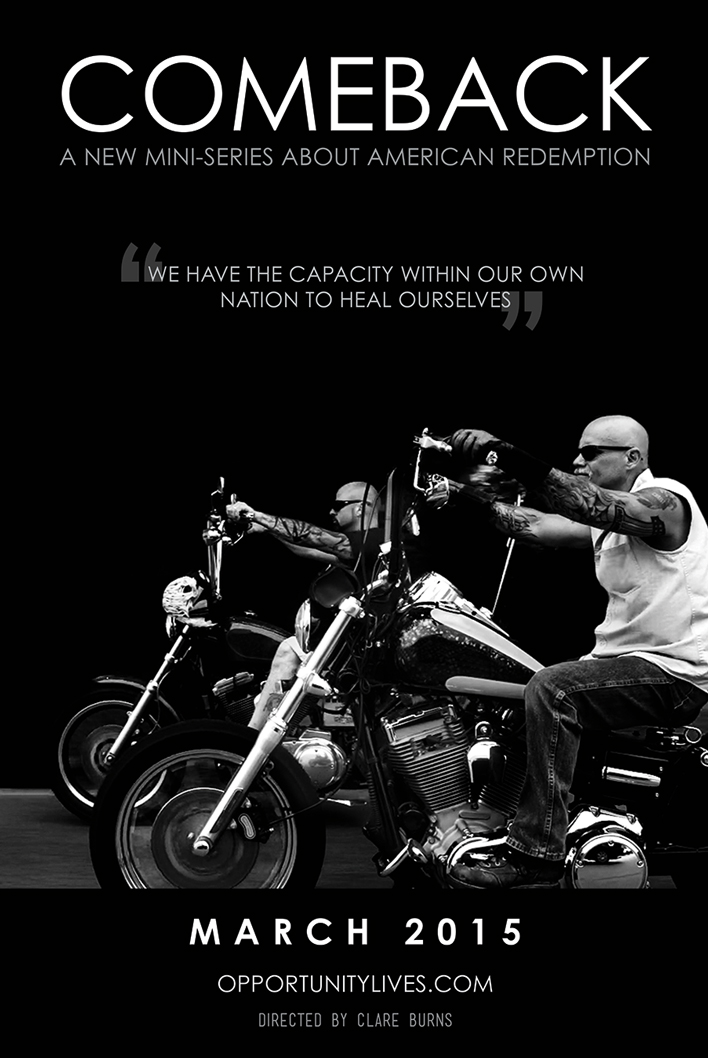
An ex-addict helps others turn their lives around in the mini-series “Comeback.” (Opportunity Lives)
Another family-bolstering force is pastor Shirley Holloway, who operates a haven in Washington, D.C.’s Anacostia neighborhood where addicts and others who are hurting find relationships that push them toward independence rather that failure and dependency. Holloway says she deals with untapped potential, not performance. Episodes can be screened at cneonline.org/ comeback-series. —Emily Rothbard
Uber-flexible Philanthropy
The constantly evolving flexibility and power of philanthropy is illustrated by a little promotion the app-based car service Uber ran this spring in partnership with Goodwill Industries. As we’ve highlighted in yellow on this screenshot, Uber added a special “GIVE” button to its app for one day in May. Any customer pushing that button would have an Uber car and driver show up at his or her door, willing to cart off as many bags of donated clothes as the user wanted to get rid of, free of charge. Though the event was available in only a few cities (Uber faces a maze of different regulations in every local market), it collected 450,000 pounds of clothing later sold to benefit Goodwill’s mission of helping strugglers find jobs.

(Goodwill)
In Memoriam: Randy Richardson
Randy Richardson—decorated WWII veteran, serial entrepreneur, philanthropist, and patriot dedicated to strengthening liberty at home and abroad—passed away in May. Joining right out of high school in 1944, he served in Patton’s Third Army among the grunts who turned the tide of the German offensive and won the Battle of the Bulge. After the German surrender, Richardson’s unit helped block Soviet advances in Czechoslovakia, an experience which would shape his future anti-communist views. On roads teeming with traumatized refugees he watched Soviet troops shoot down “defectors,” leaving him with a hunger to help liberate Eastern Europe during the Cold War, as he and his fellow G.I.s had liberated the West amid hot war.
After returning home he completed his education, pursued various business ventures, then ran the Smith Richardson Foundation from 1973 to 1993, using its funds to seed free-market, pro-democratic, and anti-communist efforts at home and abroad. His foundation assisted Eastern European dissidents including the Andrei Sakharov family, Alexander Solzhenitsyn’s wife, the Czech-born playwright Tom Stoppard, and leaders of Poland’s Solidarity movement. At home, his family’s foundation supported think tanks like the Manhattan Institute and the Foreign Policy Research Institute, and academic programs like the Federalist Society, Law and Economics Centers, the National Humanities Center, and courses on governance and policy at Harvard.
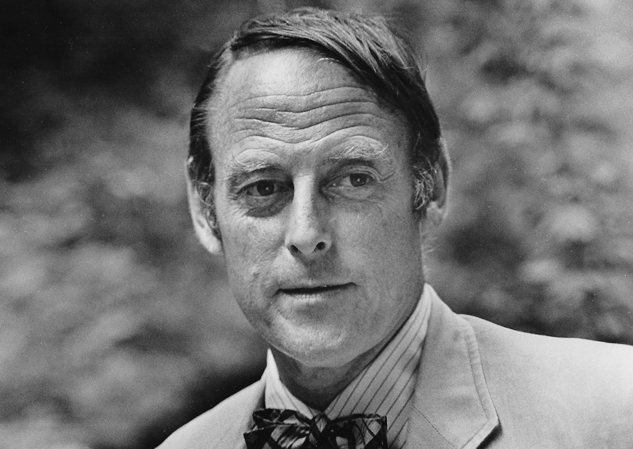
Having co-founded a television syndication company in the 1960s, Richardson knew the importance of the media. He encouraged free exchange of information in repressive societies by supporting Radio Marti broadcasts into Cuba, funding transmission towers and programming for Radio Free Europe and Radio Liberty, even supporting bodyguards and a bullet-proof car for Peruvian economist Hernando de Soto when his prescription of market liberalizations for poor countries brought him death threats.
Under Richardson’s direction, the Smith Richardson Foundation supported publications like the Public Interest, the American Spectator, the National Interest, and the New Criterion, and books like Jeane Kirkpatrick’s Dictatorships and Double Standards, George Gilder’s Wealth and Poverty, Jude Wanninski’s The Way the World Works, Michael Novak’s The Spirit of Democratic Capitalism, and early research by economist Michael Boskin. His foundation contributed to television production of Milton Friedman’s “Free to Choose.” The bemedaled G.I. passed away on Memorial Day 2015, a true servant of his country.
In Memoriam: Jack Templeton
Jack Templeton was the eldest child of Sir John Templeton, the legendary investor and mutual fund innovator. He studied to be a pediatric surgeon, including under C. Everett Koop at the Children’s Hospital of Philadelphia, then devoted two years of medical service to the Navy. He settled outside Philadelphia, where he and his wife, also an M.D., built successful medical careers and raised their two daughters.
By the 1990s, he found himself more and more drawn to helping his father with his increasingly complex philanthropic work. Eventually he left his medical practice to oversee the charitable efforts of John Templeton, whose three foundations were valued at more than $7 billion. Sir John’s passion was uncovering the ways that religion and the sciences invigorate each other and inspire people to live more virtuous and happy lives. Carrying this out was a challenging duty.
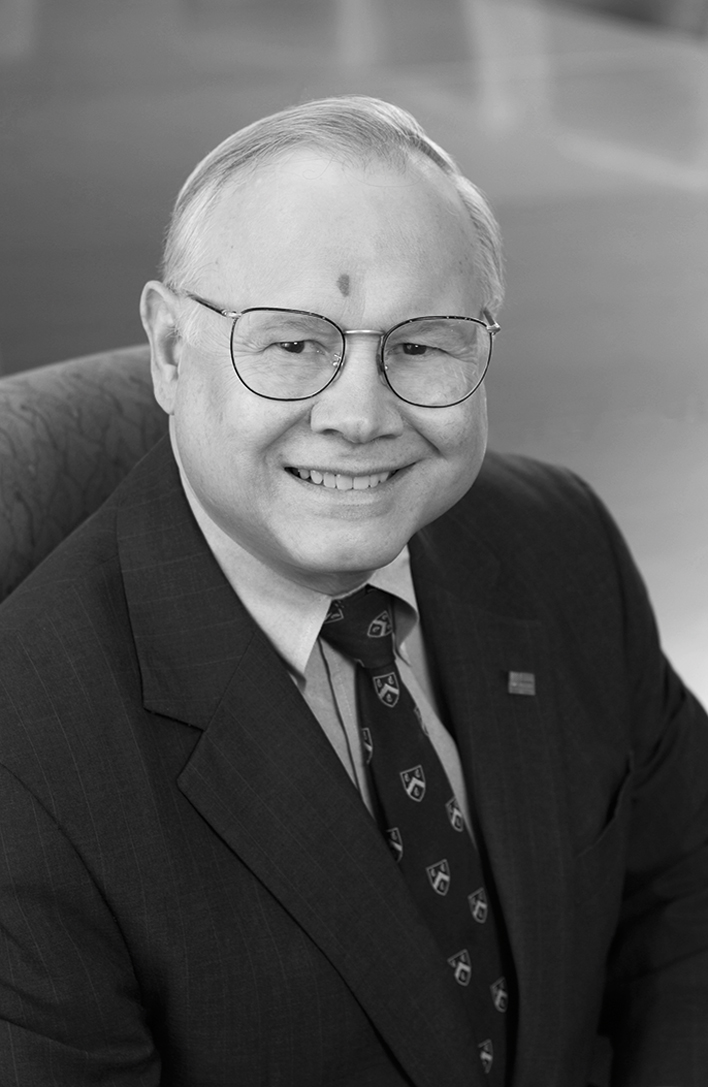
(Ed Wheeler)
Aware of the danger of philanthropic drift, the Templetons worked energetically to encode Sir John’s ideas into the DNA of the foundation—through its bylaws, practices, grantmaking guidelines, and even its investment policies. Jack Templeton made it his mission to honor the donor intentions of his father, which he saw not as a restraint, but as “a positive virtue.”
His leadership at the foundation combined the curiosity of a scientist and the can-do confidence of a surgeon. He also recognized the importance of humility whenever one is exploring complicated topics. “If you approach a subject where there is limited knowledge with a spirit of humility and open-mindedness, you’re much more likely to see ideas that others put forward but you have not thought of,” he wrote.
He shared with his father a passion for “relentless questioning,” focusing on the “big questions.” He believed that a healthy democracy required an educated voting populace. Any person, from a cab driver to a member of the Royal Society, could be a source of knowledge or insight. Hence the pen and notebook he always carried.
Outside the foundation, Jack Templeton was generous and thoughtful. R. J. Snell, director of the philosophy program at Eastern University, remembers attending a baseball game with Templeton and two students where his host took a stroll between innings and returned with all sorts of food for the two students and stuffed animals for Snell’s children. “He sent gifts upon the birth of my child. He sent books to students.”
“While he had grave concerns about politics and the future of the republic,” says Snell, Templeton “was fundamentally hopeful. He thought the world was ordered by a wise and generous God. He believed, as did Sir John, in spiritual progress. He thought love was an unlimited resource which drove the sun, moon, stars, and human affairs. If anything, I was the old skeptic in the room, he was youthfully optimistic. Hope was constant.”
“The key to understanding Jack is this,” says one Templeton Foundation executive. “He was a doctor. His mother died in a horrible traffic accident when he was 11, and he spent the rest of his life trying to heal those whom the world had broken. He saw children whose bodies were mangled by disease or trauma, and he would stand in the operating room, throwing everything he had at fixing them…. He saw a nation that was sick at heart. So he did everything in his power to heal it.” —Tom Riley
